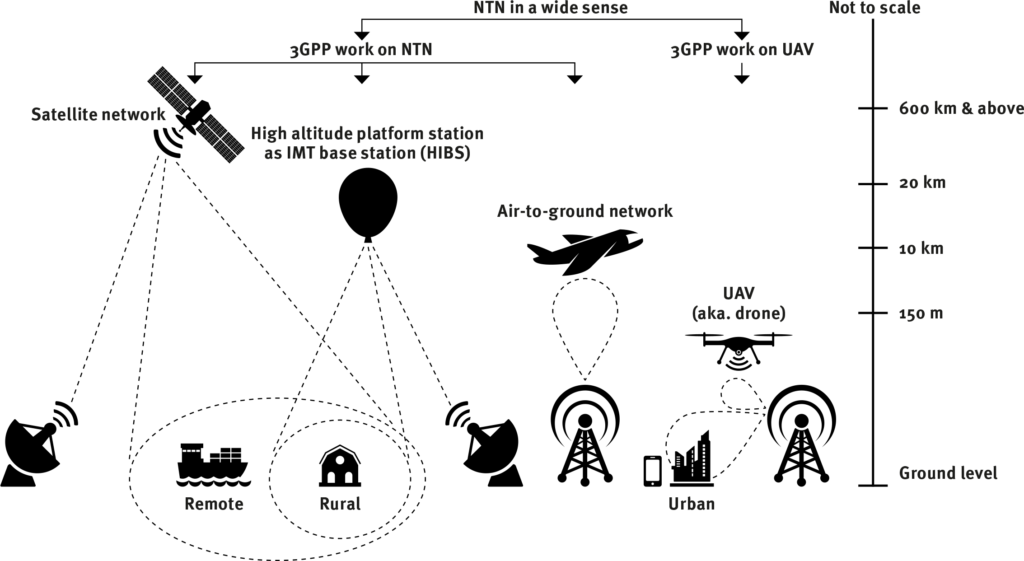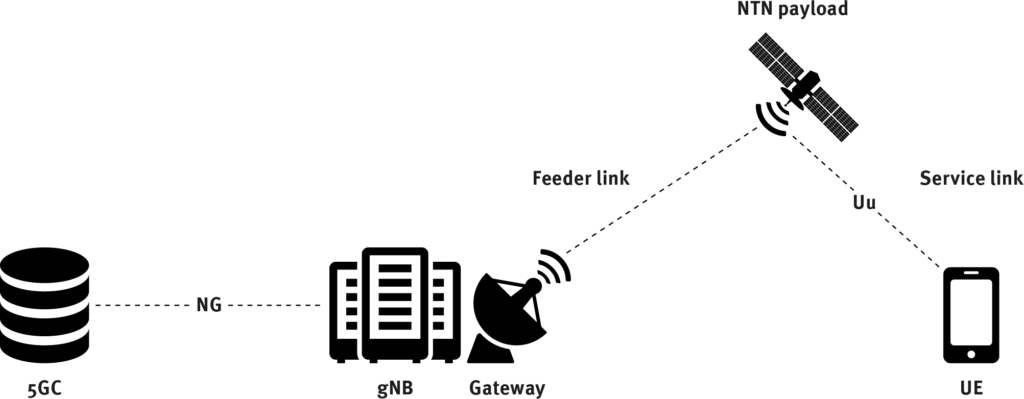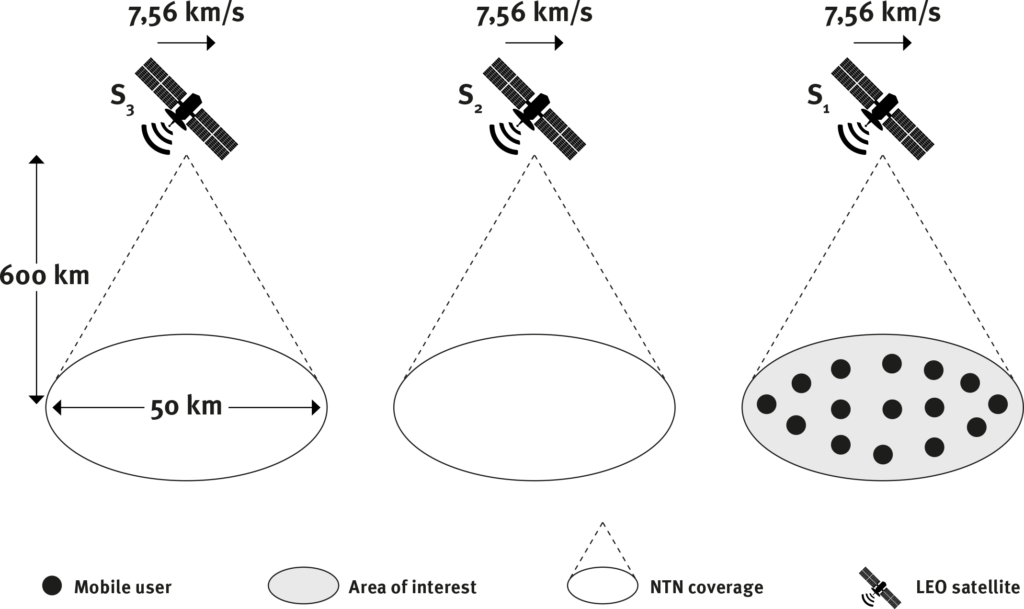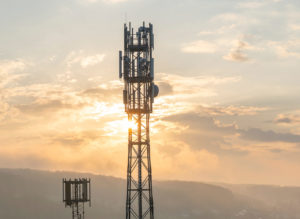The market around satellite IoT is consistently active and growing. There are currently 44 providers, 16 of which already offer operational services.
We look below at Sateliot.space solution, an NB-IoT uplink from space, and look at the status-quo.
In concrete terms, then, the aim is to establish NB-IoT connectivitiy from space. So around the use of satellites (so-called low-earth-orbits / LEO) to increase cellular network coverage, optimized for NB-IoT/M2M devices. Besides the satellite network, there are other types of non-terrestrial networks, but we do not consider them below.

And why should you do that?
It will hardly be cheaper?
This is unknown. It must be remembered that a sizeable fleet of satellites must first be launched into orbit. This subsequently requires maintenance, which still costs a lot in times of private space travel. This contrasts with the maintenance of the terrestrial infrastructure and the construction of new cellular towers. Here we still have to wait for concrete offers. One thing can be said in advance – it will not be free of charge but possibly attractive!
The round-trip time will probably be higher.
Correct. The satellite must also send the received device data back to earth so that it can be transferred to an IoT platform. A data packet must therefore cross the atmosphere twice to arrive. The signal runtime of the radio link earth-satellite-earth at a flight altitude of about 600km is about 2×2 msec. In the terrestrial environment, signal propagation times in the µsec range are 100-1000 times shorter (corresponding to shorter distances between the mobile device and the terrestrial transmission towers).
The data rate/data volume will probably be lower.
Correct. As a consequence of longer signal propagation time, a lower data rate is to be expected, of course. Here, however, one assumes typical NB-IoT data volumes anyway, classic message-based applications with a few 100Bytes/day.
And does that actually work yet?
Yes and no. It is being worked on. Sateliot currently has one satellite in orbit and plans to launch a second in the fall of 2022. As they themselves explain on their website.
So there will still be some water flowing into the sea before we can speak of worldwide coverage here.
What is the actual benefit of this compared to a terrestrial solution?
Quite simply: global network coverage.
So it’s kind of the same motivations as buying a satellite phone.
Connectivity established in a region without terrestrial network coverage.
Examples of regions without terrestrial network coverage:
- Inhospitable regions like mountains, deserts, primeval forests, high seas, polar regions
- Remote regions that are uninhabited or sparsely populated (for example Australia’s outback)
- Places that are geologically unfavorable for mobile communications, such as valleys, ravines, slopes
- Whereas deep canyons or mountain valleys are difficult to reach for satellite radio as well
- Developing countries (poorly developed or only temporarily functioning cellular infrastructure)
Using the example from Austria (coverage map of TMA available at https://www.magenta.at/unternehmen/netz), one can see the white spots in the area of inhospitable regions (mainly the Alpine region).
As you know, the reality is somewhat different and even in a region with good coverage according to MNO, you can have only 2G reception in an unfavorable location, or in rare cases no network at all.
How does it work?
Here you can see a simple picture of the architecture. The first prerequisite is therefore a 5G core network as well as satellites in orbit and corresponding earth stations (feeder links).

The promise of technology / by sateliot:
- is possible with existing hardware of the UE (User Equipment)
- works with standard UE antennas
- seamless transition between terrestrial and non-terrestrial uplink
- works with the UICC (Universal integrated circuit card = SIM card) of the UE (roaming contracts with various MNOs)
The base station (gNB) remains terrestrial, the satellite serves as a kind of mirror / reflector and forms a new coverage-area on the earth’s surface. Rel. 17 of 3GPP TR36.763 also describes mechanisms for beamforming, i.e. steering of the coverage area by the satellite antennas.

Is there something comparable?
If you research the field of satellite communications technology, three systems keep popping up:
- Iridium
- Inmarsat
- Thuraya
You can read about this at expeditionstechnik (link in German).
Looking at the Iridium system, it is similar in the broadest sense. It is a system of ~66 satellites in low-earth orbit with global coverage also over the polar region. There are some ground stations as gateways. The satellites are meshed in orbit, which means that the data is routed in orbit to a satellite in the reception range of a ground station.
In addition to classic telephony, an IP data service “Iridum-Certus” is also offered at “DSL” like speeds. According to Wikipedia up to 1.4MBit/s DL / 500kBit/s UL.
For narrowband, Iridium offers a service called “Short-Burst Data,” for message-based transmission.
If you use Iridium, you are trapped in this world. You need specific hardware. For system integrators there are Iridium modems and for end users there are telephone-like terminals. Depending on the service, special antennas are also required.
Technical challenge
Based on the research conducted on 5G-NTN technology, two major technical challenges have crystallized that are repeatedly cited:
- Signal runtime
- Mobility & Handover
Not to go too far into detail… Signal propagation time is an important information in radio network, generally in radio transmission. Typically, in terrestrial networks, the signal propagation time is less than the duration of a “radio frame”, which is no longer true for NTN with a signal propagation time of a few milliseconds.
The terrestrial cellular network has always been designed for stationary base stations (cell towers). Network planning is based on honeycomb-like structures with typically three sectors per mast, forming the hexagonal honeycomb. The coverage area is typically described with a radius of a few kilometers, which results in an extremely short signal propagation time (microseconds) compared to a satellite radio link with 600km (milliseconds).
Mobile devices, on the other hand, have always been mobile, and up to a certain speed, handover between base stations works transparently (making calls on the train or driving a car without a disconnect, at least in theory, should always work).
Thus, statements can now be made about how the signal propagation time will look in a terrestrial scenario. Thus, it is rather short and can be found within certain limits and has a rather low variation due to the slow movement of the mobile device. (<200km/h)
If we now consider the NTN scenario, we have already seen that the pure signal transit time becomes much longer due to the greater distance and the double atmospheric crossing. What is added here is a significantly higher variation in the signal runtime itself. The reason for this is that, from our point of view, so-called LEOs fly by quite quickly on the ground.
Another paper shows a typical NTN handover scenario with LEOs at 600km altitude and a velocity of 7.56km/s (required to maintain orbit, approximately 96 minutes for one orbit). The coverage area is indicated as a circle with a diameter of about 50km.
As a consequence of the high orbital velocity, the signal propagation time changes very quickly during the flyby and the coverage window of a satellite is also quite short. If you calculate with the values from the paper, you get rather few seconds of reception window, which is an obvious discrepancy.
What is probably true, however, is the required orbital velocity of the satellite because otherwise it cannot overcome the Earth’s gravity and would come down again very soon.

Conclusion
So these seem to be the biggest technical challenges.
Research on these topics began in 2017.
In 2020, many papers have been published on what enhancements 5G-NR needs to handle NTN scenarios.
Since then, it has become a bit quieter around this topic, but there are a few providers that deal with it and actively work on it, such as Sateliot.
It remains exciting.


